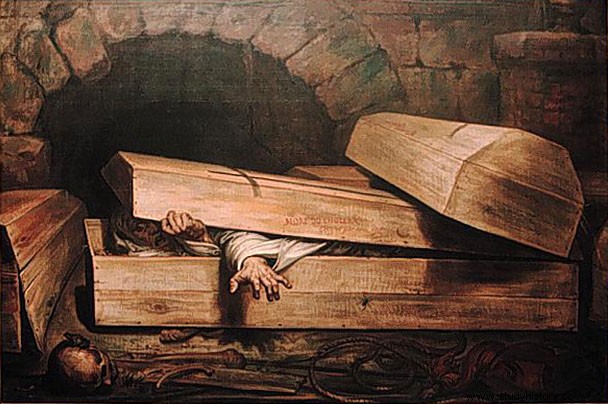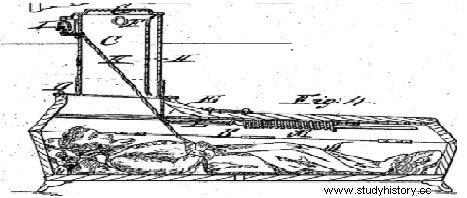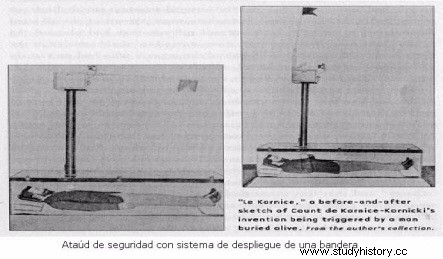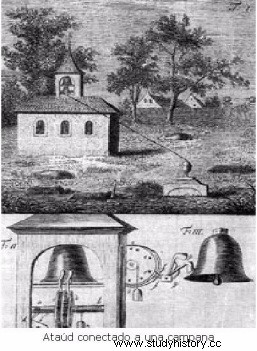Determining whether the dead were actually dead was a puzzling and inexact science before the advent of modern medicine. But the fear was not totally irrational. Throughout history there have been numerous cases of people buried alive accidentally and curious legends spoke of open coffins where a corpse was found with a long beard, or with the palms of the hands raised upwards, or destroyed by the effort of having tried to escape...

Literature also found fertile ground in the fear of being buried alive; the horror stories of Edgar Allan Poe «The premature burial » (1844), «The fall of the House of Usher » and «The Cask of Amontillado » are good examples of this.

Some people were so afraid of waking up in a coffin that they left explicit instructions that their heart must be stabbed or their throat cut before being buried.
This is how things are, and the result of that fear, or «taphophobia » (from the Greek taphos , which means "grave" and which would translate as "fear of graves"), the techniques used to establish the definitive nature of the presumed deceased were different.
It is said that Paracelsus (1493-1541), alchemist and perhaps the greatest doctor of his time, managed to resuscitate a corpse using bellows , a trick that was probably picked up from Arabic medical writings.
During the 17th and 18th centuries they were given tobacco smoke enemas or their nipples were pinched with pliers.
Another system consisted of vigorous pulling of the tongue of the presumed corpse, even using a clamp-machine to do so, which, for at least three hours, and continuously, subjected it to strong pulls.
Also in the 18th century, the Danish anatomist Jacob Winslow (1669-1760) devised a method based on tickling the nose with a feather, whipping the skin with nettles, or sticking needles under toenails . Everything was worth to guarantee not being buried alive.
Although some victims were allegedly brought back to life during these tortures, the scientific community considered that the only true sign of death was putrefaction.
Thus, it was advised that anyone presumed dead should be placed in a warm place for signs of decomposition before burial. It was the so-called «waiting morgues « .

In the 19th century, technological development in this quest to prevent premature burial materialized in the "safety coffin" , an invention that would allow the wrongly buried to communicate with the world above them. Most models included an air tube and a device that allowed the surface to be notified of the return to life of the buried, by blowing a horn, or raising a flag. There was a model that included a mechanical hammer brass to hit the coffin lid.

Other designs included stairs, escape hatches and even tubes for transferring food . Another would allow the prematurely buried individual to cast a firecracker through the air tube of the coffin. Some even came to be equipped with a shovel.
An urban legend says that the saying «Saved by the bell » derives from the fact that in some of these «security coffins» a chain was placed that was tied to a bell on the outside , which would alert that the recently buried person would not have died yet.


